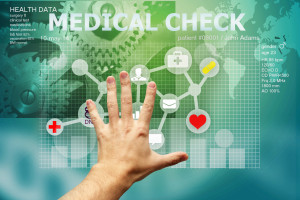Meaningful Use as Digital Health Incubator
We’ve all heard about “Meaningful Use,” but where did it come from, what does it mean, and how might healthcare consumers ultimately benefit? Let’s find out!
Back in 2008 the National Quality Forum (NQF) issued a report identifying opportunities for improving public health, efficiency, safety, privacy, and patient engagement, among other areas. The recommendations became the foundation for the “Meaningful Use” of electronic medical and health records (EMR/EHRs), which gained momentum a year later when the American Recovery and Reinvestment Act (ARRA) formalized the need for preserving and improving healthcare affordability.

The HITECH Act soon followed, designed to help meet those goals through Health Information Technology (HIT). Monetary incentives through Medicaid and Medicare were offered to eligible healthcare professionals and hospitals to adopt certified EMR/EHR technology and use it “meaningfully” to improve healthcare. The goal is to ultimately create better clinical outcomes, increased transparency and efficiency, boost individual empowerment, and produce more robust research data.
In July 2010, the Centers of Medicare & Medicaid Services (CMS) established three phases of the EHR Incentive Program applicable over five years, whereby eligible physicians and hospitals would meet meaningful use criteria and gain incentives by adopting certified EHR technology, and use it to achieve specific objectives:
- Stage 1: Data Capture and Sharing (2011-2012)
The nuts and bolts of EHR integration, including capture and standardization, tracking, internal communication, reporting of quality measures, engaging patients and their families through data. - Stage 2: Advance Clinical Processes (2014)
Integration with the Health Information Exchange (HIE) of e-prescriptions and lab results, electronic transmission of patient care summaries, and increasingly utilized patient-controlled data. - Stage 3: Improved Outcomes (2016)
Achieving top line benefits, including improved quality, safety, and efficiency, and healthcare outcomes; decision-support; patient access to self-management tools; HIE-based access to patient data.
Implications & Opportunities
Up to now, the integration and adoption of health information technology, especially EHRs, have often been problematic. Whereas most professionals and even patients agree that technology can improve outcomes, the disruptive nature of digital often precludes utilization, and typically spawns fragmentation and interoperability nightmares. Meaningful Use combats these obstacles with genuine incentives, physicians qualifying for as much as $63,750, and hospitals for $2 million or more.
- 88% of providers report that their EHR produces clinical benefits for the practice
- 75% of providers report that their EHR allows them to deliver better patient care
Such an unprecedented synergy between government, healthcare providers, and technology has already created powerful opportunities, especially in EHRs and digital health. Focused on realizing the looming goals of Meaningful Use, technologists are getting closer to the Holy Grail of platform agnosticism, device interoperability, and data universality. The central tenet of patient empowerment – making the healthcare system less paternalistic – is a core objective of Stage 2.
As such, the ACA and Meaningful Use hold tremendous promise for patients and patient-centric communications. Despite many challenges and the ongoing need for caution, unique and compelling opportunities abound for closing the loop between patient data and their physicians through EHRs at the point of care. Additional opportunities for integrating patient data into decision-making tools such as @Point of Care powered by IBM Watson are taking hold, further expanding the vision.
Summary & Key Takeaways
The future of health information technology, especially EHRs, points to a “Coke vs Pepsi” future competitive landscape, where thousands of fragmented vendors eventually coalesce into three, most likely just two, main platforms. Until the inevitable happens Meaningful Use has helped drive adoption, utilization, and innovation. The benefit to the patient is realized not only in terms of reduced costs and heightened efficiencies, but in exciting new opportunities for engagement:
- Patients will gain ever-increasing control of their own data
- Patients will communicate more directly and transparently with their physicians beyond the point of care
- Patients will integrate their EMR/EHR platform with wearables and other biosensors to make biometric data input and sharing seamless
- Patients will share biometric data between appointments, giving their physicians an unprecedented view into their overall health
- Patients will make their data responsive, with alerts and other feedback loops to help heighten adherence and other forms of behavioral modification
So pay close attention to the evolving digital health landscape, where science, communications, and technology merge – sometimes even with helpful impetus from the government – for the benefit of patients and the healthcare systems that serve them.